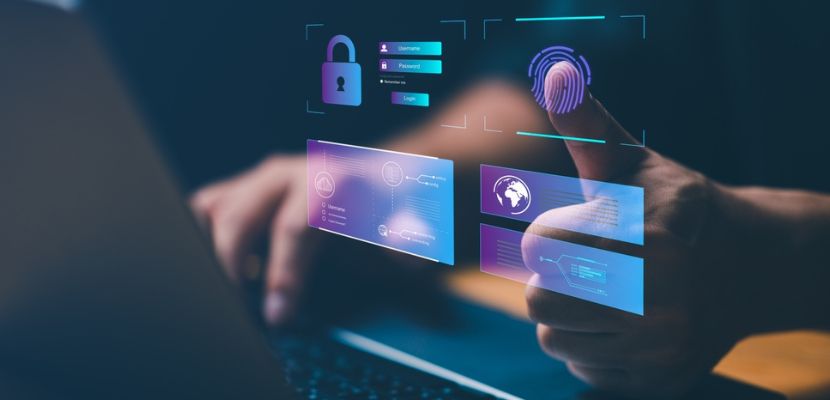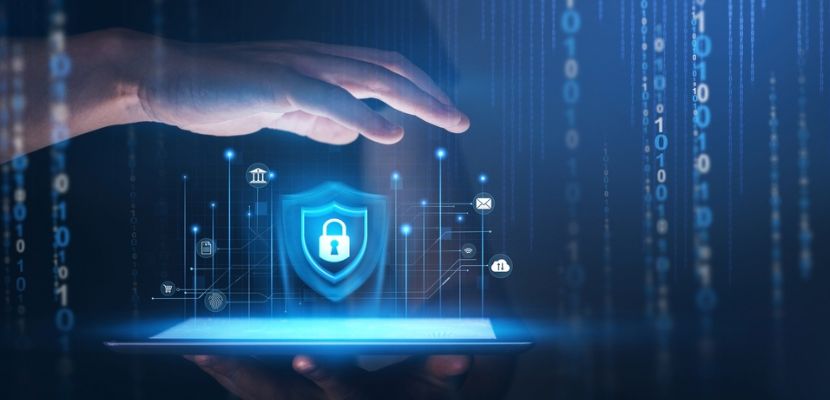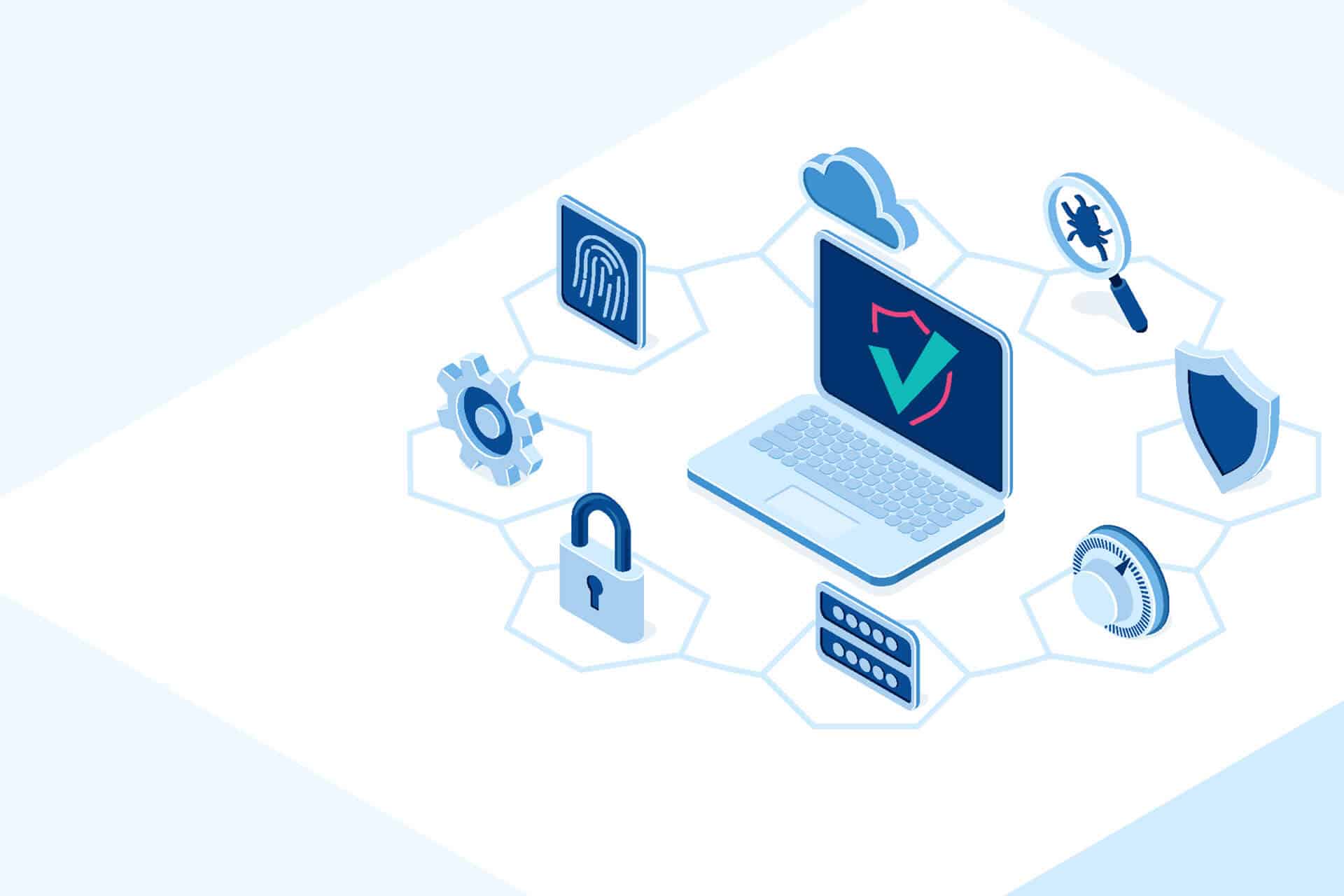As cyber threats evolve, so must the security tools and strategies to combat them. Privileged access management (PAM) emerges as a crucial aspect of cybersecurity that successfully prevents various online threats. PAM controls and monitors privileged accounts with access to sensitive data and systems to ensure the utmost protection of digital assets.
This article takes you through everything you need to know about privileged access management. Jump in to learn about the best PAM strategies you can implement to protect your organization from unauthorized access.

What Is Privileged Access Management (PAM)?
Privileged access management (PAM) is a set of strategies and technologies designed to manage, control, and monitor access within an organization. PAM focuses on privileged accounts with elevated permissions that provide users with access to one or more of the following:
- Critical systems.
- Sensitive data.
- Administrative functionalities.
Typical users with privileged accounts are system admins, IT staff, and executives. The primary goal of PAM is to safeguard against potential security threats by limiting and monitoring access to these accounts. If unauthorized users gain control of these accounts, intruders could exploit elevated permissions to compromise network security, steal sensitive data, or disrupt operations.
PAM vs. PIM
Privileged access management (PAM) and privileged identity management (PIM) are both crucial for managing access to sensitive info, but the two practices focus on different aspects of cyber security.
PAM manages privileged access to critical data and systems, focusing on controlling who has access to privileges and how those privileges are utilized. PAM monitors elevated accounts to protect from abuse or unauthorized access by third parties, lowering the risk of:
- Data breaches.
- Insider threats.
- External attacks.
PIM deals with the identities and roles of privileged users in an organization. The practice defines and administers the roles and access rights of each user based on job function.
What Is Privileged Access?
Privileged access refers to special permissions or rights given to certain users or systems within an IT landscape that allow them to perform certain tasks. Here are a few examples of tasks reserved for privileged accounts:
- Modifications of system configurations.
- Management of user accounts and sensitive data access.
- Software installation.
- Network management.
- Setup and modification of security settings.
Privileged access holders are a go-to target for cyber attacks, so it is essential to adequately manage and monitor the use of their accounts.
Human Privileged Access
Human privileged access is granted to individuals within an organization responsible for performing administrative, managerial, or specialized tasks. Usual holders of these privileges are:
- System administrators who manage IT systems and infrastructure.
- Database administrators who create, modify, and delete databases.
- Network admins who manage the network infrastructure, including routers, switches, and firewalls.
- IT managers and directors who require access to IT systems for oversight and strategic planning purposes.
- Application administrators who manage critical applications, their deployment, and maintenance.
- Security professionals who require privileged access to monitor and audit security systems (e.g., security analysts or information security officers).
- Developers and engineers who require privileged access to deploy code, access development environments, and troubleshoot issues.
- External consultants and vendors who require temporary privileged access to perform specific tasks, such as system updates or troubleshooting. This access is usually time-limited and closely monitored.
- Users with emergency accounts (break-glass accounts) used in situations where normal admin accounts cannot be used.
Non-Human Privileged Access
Non-human privileged access is granted to automated systems, apps, and devices that require special rights to perform certain tasks. Here are a few examples of non-human privileged access:
- Service accounts used for interaction between or within systems and apps.
- Application accounts used by software apps to access databases, file systems, and other resources.
- Automated scripts for performing routine tasks (e.g., data backups, system maintenance, batch processing, etc.).
- API keys used to authenticate interactions between apps and services when performing critical functions.
- Robotic Process Automation (RPA) bots used for automating repetitive tasks, such as processing transactions or updating records.
- Network devices such as routers, switches, and firewalls execute network commands and policies.
- Internet of Things (IoT) devices, such as smart sensors and controllers that communicate with other devices and servers in enterprise and industrial environments.
- VM hypervisors that manage virtual machines and require privileged access to host systems or allocate resources.
How Does Privileged Access Management Work?
Privileged access management is a comprehensive framework that manages how privileged accounts are used in an organization. PAM ensures that access to sensitive systems and data is granted only to authorized users and strictly controlled to avoid misuse.
PAM identifies all privileged accounts across the network to control access to them through:
- Password vaulting, where credentials are stored securely and retrieved only when needed.
- Session management involves recording and monitoring privileged sessions for review.
PAM-granted access is often limited to a certain duration to prevent unauthorized attempts. By implementing the principle of least privilege, PAM ensures only specific users have access to sensitive data and operations.
Types of Privileged Accounts

There are many types of privileged accounts that play crucial roles in the IT infrastructure. Let's look at the most common ones.
1. Service Accounts
Service accounts are used primarily by software apps and services for interacting with the operating system or other software components. These accounts provide necessary permissions for apps to:
- Run tasks.
- Access resources.
- Perform system-level operations that could not be done with regular permissions.
Service accounts do not require human intervention since they are granted to automated services, processes, and apps.
Due to their elevated privileges, service accounts are frequent targets of cyber attackers. These accounts are typically given long-term credentials, so they pose significant security risks if not managed properly. These credentials must be strictly monitored, stored, audited, and regularly updated to ensure protection against malicious activity.
2. Domain Administrative Accounts
Domain administrative accounts are the most powerful privileged accounts within networked systems. They have access and rights to control all the servers, workstations, and devices within the domain. These accounts allow users to perform a wide range of tasks, from installing and configuring software to modifying security policies and managing user accounts and groups.
Compromising a domain administrative account often leads to catastrophic consequences. An intruder could spread malware across all networks, commit data breaches, and make unauthorized changes to sensitive systems.
The best way to protect domain administrative accounts is to limit their number, enforce strong password policies and multi-factor authentication, and continuously monitor for unusual activity.
Learn about the differences between malware and ransomware and how they affect the security of your organization.
3. Local Administrator Accounts
Local administrator accounts are specific types of privileged accounts that exist on individual workstations, servers, and laptops. They grant complete control over the local system, allowing users to :
- Install and uninstall software.
- Change system settings.
- Manage local user accounts and files.
Local administrator accounts are essential for maintenance, troubleshooting, and device configuration changes.
The key challenge of these accounts is the fact that they are not used on a daily basis. The lack of regular use increases the chances of security breaches, so it is vital to monitor these accounts even when they are not being actively used. This precaution reduces the risks of account abuse by internal or external sources.
4. Privileged User Accounts
Privileged user accounts are assigned to system admins, network engineers, and IT support staff who require privileged access to manage and maintain IT systems. These accounts are linked to individual employees and are used to perform both regular and administrative tasks. However, this doubles the chances of misuse attempts and cyber attacks.
Keeping privileged user accounts safe requires implementing the principle of least privilege, where users are given only the access they need to perform tasks tied to their job functions. Combined with authentication and regular audits, this ensures that privileged user accounts are protected within the IT infrastructure.
5. Non-Human Automation Accounts
Non-human automation accounts execute automated tasks, such as data processing, system monitoring, and routine maintenance activities. They streamline operations by reducing the need for manual input and increasing efficiency.
These accounts usually receive long-term credentials, but they still require constant monitoring to avoid breaches. The credentials must be regularly rotated, and the access should be limited on a need-to-know basis. All activities should be logged and monitored to mitigate potential risks while maximizing the benefits of automation.
6. Cloud Accounts
Cloud accounts are used to manage and operate resources on cloud platforms. They have elevated privileges required for the configuration of cloud environments, deployment of services, and data storage management. They are crucial for effectively managing the cloud infrastructure and services.
Cloud accounts require more robust security policies due to the dynamic nature of cloud environments. Strict access controls, multi-factor authentication, and regular audits are essential for minimizing risks and exploitation of access.
7. Emergency Accounts
Emergency accounts, or “break-glass” accounts, are privileged accounts intended to be used in critical situations where normal administrative access is compromised. These accounts are used in scenarios such as system outages, security incidents, or situations where admin accounts are locked out or malfunctioning. They are given to the holders of the highest-level administrative roles to restore systems and resolve issues promptly.
To protect these accounts from misuse, they are kept disabled under normal circumstances and only activated when necessary. Access to them is strictly controlled and monitored during activation and deactivation. Strong authentication measures are a must-have for managing these accounts, especially in emergencies.
8. Backup and Recovery System Accounts
Backup and recovery system accounts are used for backup and disaster recovery operations in the IT environment. They allow access to file systems, databases, and other critical data repositories to ensure they are securely backed up and can be recovered swiftly in case of an emergency.
If these accounts are compromised, they can potentially cause destruction or theft of data, so it is essential to enforce adequate security protocols. This includes applying the principle of least privilege to ensure that only required personnel have access to use these accounts, and only when necessary.
Why Is Privileged Access Management Important?
Privileged access management is essential for many reasons, including:
- Preventing data breaches by monitoring the use of privileged accounts.
- Mitigating insider threats from employees with access to sensitive systems.
- Compliance with regulatory requirements regarding access to sensitive data to avoid legal and financial penalties.
- Limiting the impact of cyber attacks by restricting what attackers can access and do with compromised accounts.
- Auditing and monitoring for forensics analysis is essential to conduct after an incident occurs to detect weak spots and prevent them from being exposed again in the future.
- Reducing the attack surface by minimizing the number of privileged accounts and their abilities.
- Securing remote access to critical systems in today’s IT environments.
- Enhancing operational efficiency to streamline operations and reduce the risks of downtime caused by unauthorized changes or errors.
- Protecting against Advanced Persistent Threats (APTs), which often aim to exploit privileged accounts and infiltrate the organization’s network.
- Ensuring least privilege access to allow access to sensitive information only to required personnel.
- Safeguarding against credential theft by rotating and vaulting credentials to avoid them being stolen and abused.
- Maintaining trust with stakeholders by showing them how dedicated the organization is to safeguarding sensitive data.
- Facilitating fast and secure access to privileged accounts and enabling productivity.
- Enabling secure cloud and DevOps practices to securely manage access in these environments.
Privileged Access Management Best Practices

Below are the best practices to implement to make the most out of privileged access management.
1. Keep an Inventory of Privileged Accounts
Having an inventory of privileged accounts is crucial for their effective management. It includes keeping records of all administrative, service, emergency, and application accounts to understand their scope and distribution across systems and networks.
The importance of this inventory is also applicable to risk assessment and compliance. Knowing exactly which accounts have privileged access helps to identify potential security vulnerabilities and areas where this privilege should be reduced. In addition, this inventory helps to rapidly access and deploy these privileges when necessary, without the need for additional checks.
2. Apply the Principle of Least Privilege
The principle of least privilege grants users the minimum level of access they need to perform their job functions. It reduces the risk of accidental or deliberate misuse of privileges and minimizes the attack surface that cybercriminals can target, and the potential impact of their security breach attempts.
Applying this principle plays a vital role in compliance and operational efficiency, as well. Regulatory frameworks of different industries require strict control over access to sensitive data, so PAM actively contributes to organizations staying compliant with the latest standards. In addition, the principle of least privilege enables an adequate incident response by restricting privileges and hence the damage of an attack.
3. Use Strong Authentication Methods
Strong authentication methods go beyond traditional password best practices when it comes to privileged access management. They include two-factor or multi-factor authentication that adds an extra layer of security against breaches. Privileged accounts often require biometric checks or sending one-time passcodes to a mobile device to confirm access attempts to privileged accounts.
Password-related breaches are common in today’s digital landscapes, so making them complex or frequently changing them is still not enough to protect your account. Cybercriminals mislead users through phishing attacks or by exploiting security vulnerabilities, so organizations must implement a broader security strategy to protect their privileged accounts.
4. Monitor and Audit Privileged Sessions
Monitoring and auditing privileged sessions are crucial for maintaining the integrity and security of an entire organization. This helps security teams detect suspicious activity in real time and protect privileged accounts and the environment they are operating in. Also, this helps analyze user behavior and detect abnormalities to prevent account misuse.
By auditing privileged sessions, organizations have recorded insights into how these privileges are used. It is important to analyze these records after an incident occurs to detect weak spots and security practices that require immediate improvement. Also, this is a great way to do a forensic analysis of the attack itself and ensure protection across the entire IT infrastructure.
5. Perform Regular Awareness Training for Privileged Users
Privileged users have a great responsibility in each organization, so it is essential for them to keep updated with the latest security practices. Given their privileged access, these users are frequent targets of cybercriminals, so they must be equipped with the knowledge to recognize and mitigate risks before an incident occurs and causes damage to company systems.
Security awareness training teaches them how to recognize common breach attempts and avoid errors in their daily tasks. By handling data in a safe way, they ensure the protection of all systems, applications, and software in the organization, which is essential for maintaining a strong reputation with stakeholders, customers, and regulatory bodies.
6. Segregate Duties and Privileges Among Users
Segregating duties and privileges among users in an organization is critical for risk management. It includes dividing responsibilities among individuals and groups to prevent a single person from having complete control over the entire system. By segregating duties, the risks of fraud, errors, and unauthorized activities are minimized since it is difficult for a single individual to carry out and hide suspicious activities.
Segregating duties also helps to track specific roles and responsibilities, making it easier to detect malicious attempts. By doing this, organizations contribute to effective compliance management and ensure their security policies are up to regulatory standards.
7. Implement Just-In-Time and Emergency Privileges
Just-in-time privileges are granted during a limited time period to perform specific tasks, after which they are permanently revoked on the account in question. This approach aligns with the principle of least privilege, ensuring users have elevated access when they need it while simultaneously preventing unauthorized access attempts.
Emergency privileges are granted to “break-glass” accounts that are designed to be activated in crises. They allow for swift decision-making and restoration of critical systems and resources with minimal downtime. On the other hand, they are inaccessible during normal periods with no threats or emergencies, which ensures protection from unauthorized use.
8. Use Privileged Access Management Tools
Privileged access management tools have an indispensable role in managing organizations' critical data and assets. They centralize control and monitoring of privileged accounts to provide deep insights into who has them and how they are used. These tools automate the hectic tasks of continuous monitoring and management to ensure operational efficiency and reduce risks of human errors. They also make sure that security policies are enforced across the entire organizational structure.
PAM tools are also essential for compliance and auditing. They store detailed logs and reports of privileged access, session activities, and changes made within the IT environment. This is crucial for demonstrating compliance and performing forensic analysis after security incidents.
9. Integrate and Regularly Update Privilege Access Management Strategies
By integrating and updating privilege access management strategies, organizations ensure that a consistent security strategy is implemented across the entire organization. With the integration of mobile computing, cloud services, and the Internet of Things (IoT), cyber threats are evolving, so it is essential that the systems are agile enough to mitigate the risks.
Regular updates to PAM strategies bring new trends in the area of threat intelligence and help refine existing security strategies and tools. This enables organizations to adequately adapt to changes in business processes and align their security practices with operational needs and workloads.
10. Design an Appropriate Incident Response Plan
Designing an incident response plan is an essential part of privileged access management. Since privileged accounts are a frequent target of cyberattacks, they require appropriate attention and restoration plans in case of an emergency.
An incident response plan ensures that operations are restored to normal as soon as possible after an incident happens. It states proper communication tools and channels during an event to ensure all parts of the organization’s structure function properly and redirect their efforts towards remediating potential consequences of cyberattacks.
How to Implement Privileged Access Management?
Here are the ways to effectively implement privileged access management in your organization:
- Assess the current state to identify privileged accounts, access controls, and security measures they require.
- Define policies and procedures for using, managing, and monitoring privileged accounts.
- Deploy PAM solution within your IT infrastructure to manage the use of privileges.
- Implement least privilege principle to reduce risks of account misuse.
- Secure and manage credentials by regularly changing passwords and storing them safely.
- Enable multi-factor authentication as an extra layer of security for privileged accounts.
- Monitor and audit access to all accounts and sessions and review logs.
- Train and educate your staff on how to use their privileges and prevent cyberattack attempts on their accounts.
- Establish just-in-time privileges and revoke them as needed after their use.
- Regularly update and review PAM practices to ensure they are current.
- Create an incident response plan for an accurate response to security incidents.
- Ensure compliance of PAM practices with the regulatory standards of your industry.
Privilege and Cyber Protection
Privileged access management is an indispensable component of today’s cyber security. It plays a significant role in safeguarding sensitive data and systems of organizations in the evolving digital landscape filled with various cyber threats. Organizations must implement these practices to preserve their image and reputation with customers, stakeholders, and the general public.



